Radxa Dragon Q6A First look: Does Qualcomm's SoC beat the Competition?
Estimated reading time: 6 minutes
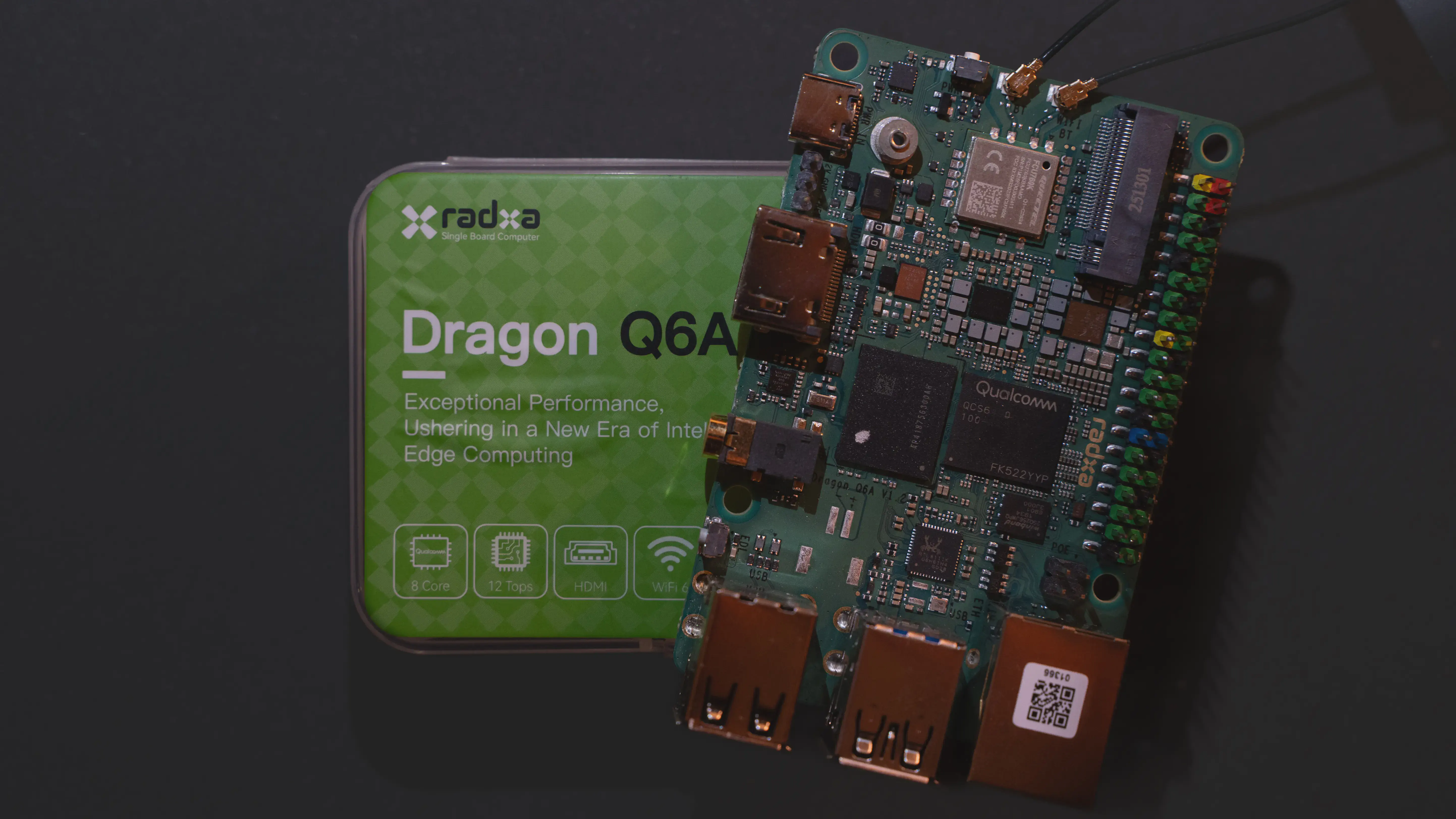
Radxa Dragon Q6A Unboxing & First look #
Today I received something special. My first Qualcomm based Single board computer in the form of the Radxa Dragon Q6A. After working mainly with Rockchip boards this one promises to be a change of pace. The SoC (which is part of the Dragonwing series) is already available in upstream linux under the name sc7280 for a while now thanks to devices like the FairPhone 5 which use the same SoC with the addition of a cellular modem.
First Impressions & Unboxing #
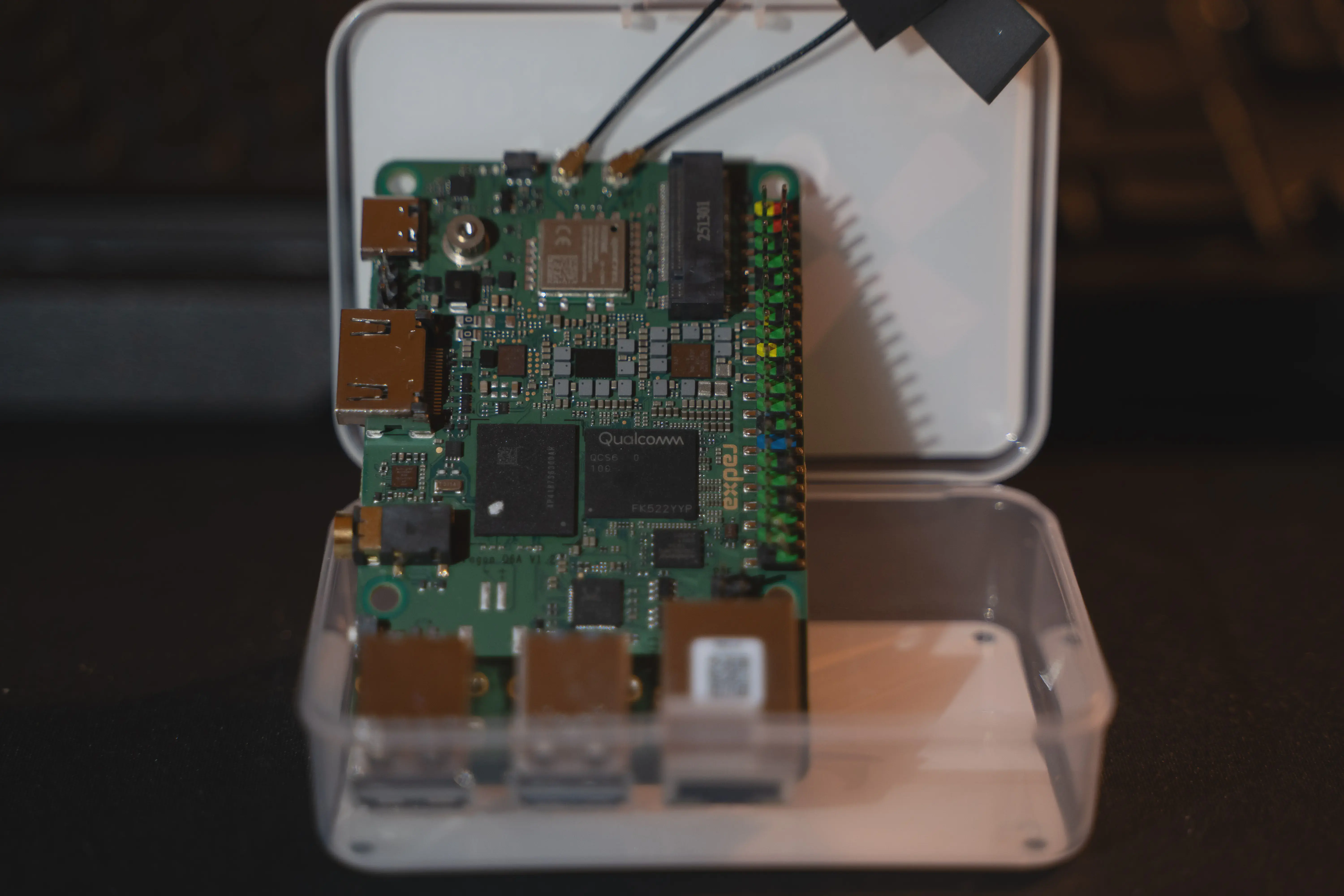
The board comes in anti static packaging and when taken out you first notice that is in the same credit card sized form factor as a Raspberry Pi but you also get a M.2 2230 slot on the front side which is always nice to have.

On the back you can see one of the highlights of this board. The EMMC socket also supports energy efficient and fast UFS 3.1 storage (more on that later) and Radxa offers the appropriate Storage modules (they have 64GB to 1TB variants) and here we have the 128GB option.
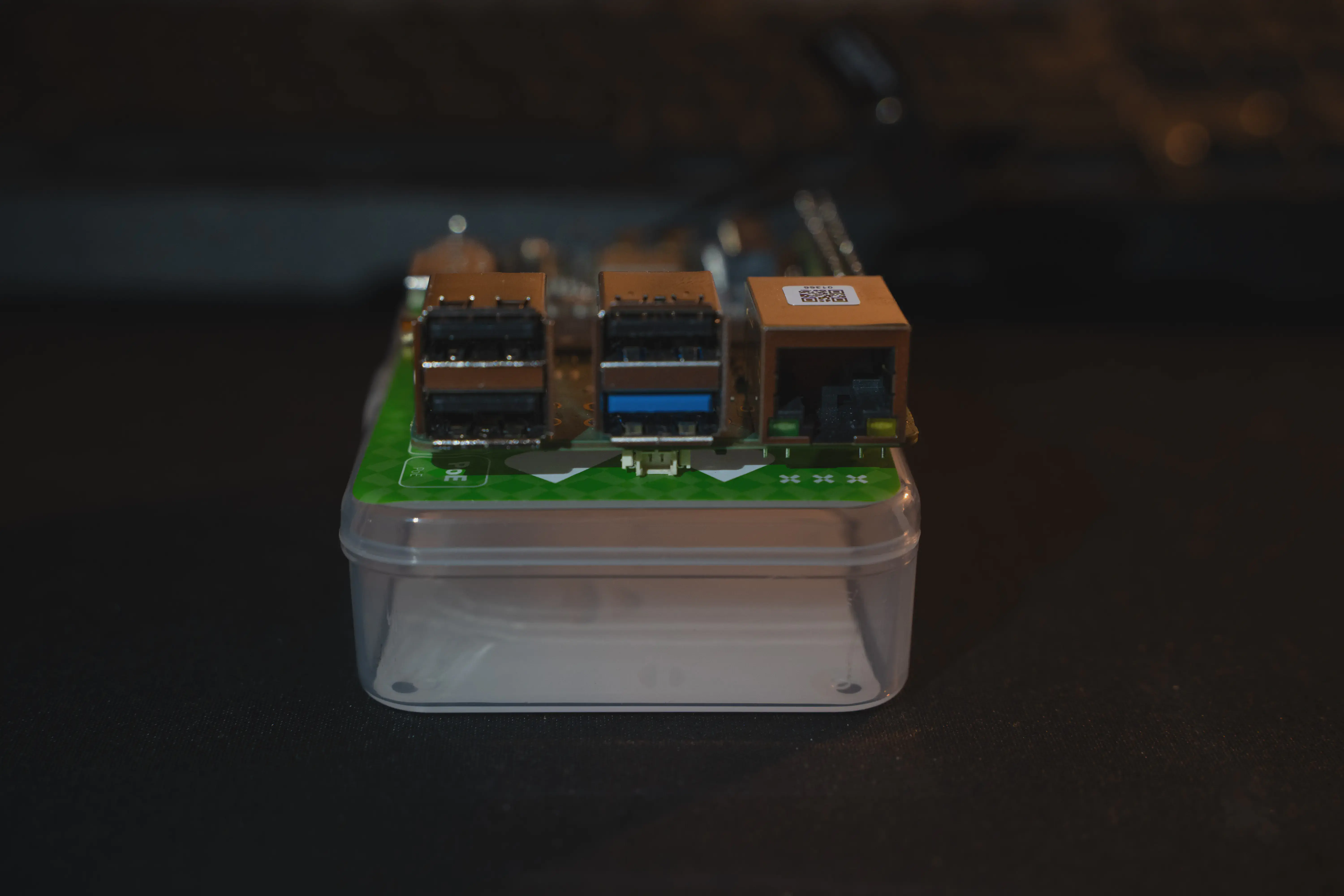
For USB we get three USB 2.0 Ports and one 3.1 Type-A port. Sadly this board only comes with a gigabit Ethernet port which stands out as Radxa usually doesn’t shy away from multi gigabit like with 2.5GbE on the Rock5B series or even 5GbE on the Orion O6.
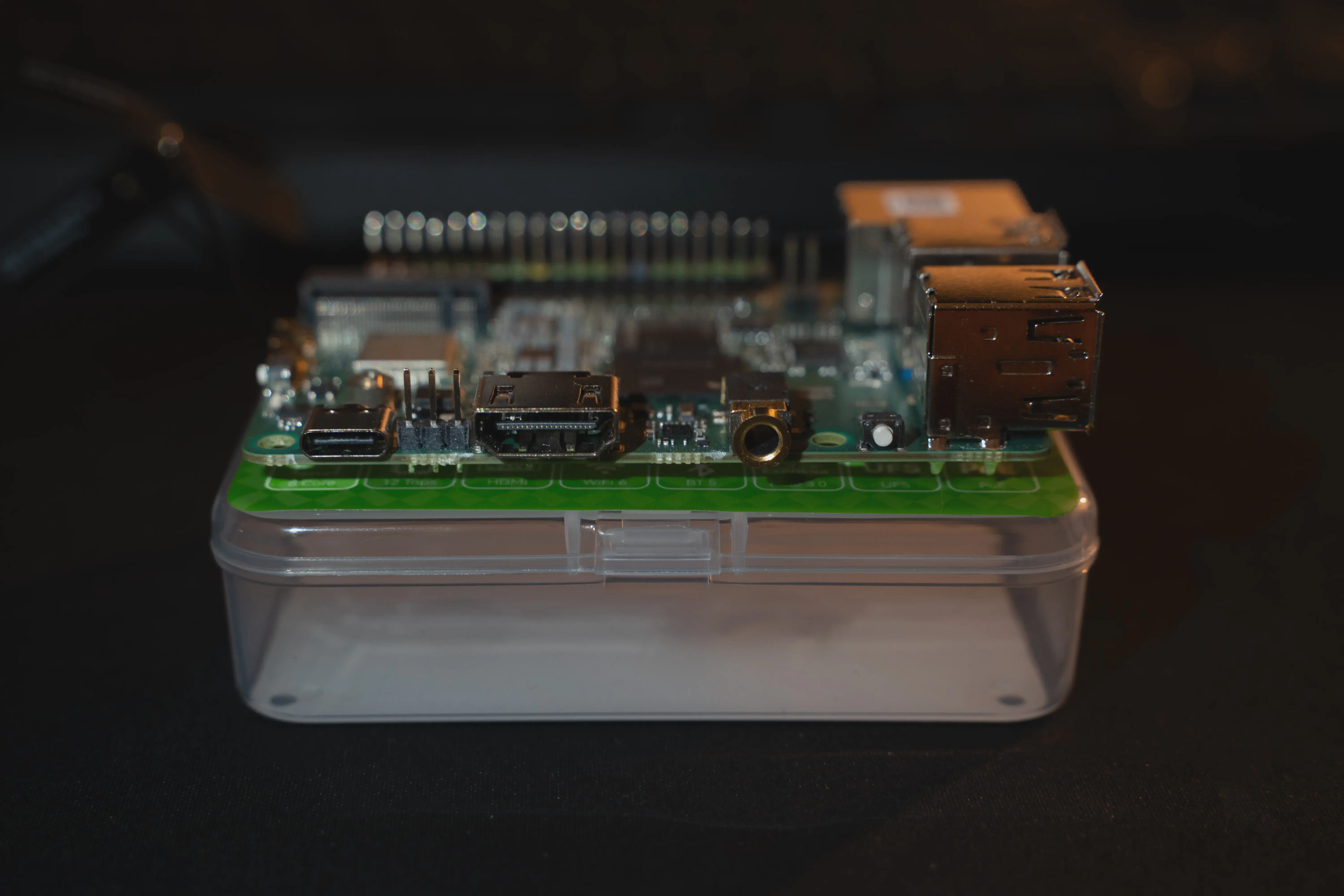
The board is powered via a 12v power-only USB-C port so make sure you have a power supply that supports the 12v PD stepping if you’re trying to power the Dragon Q6A. I also think it’s great to see this board include a headphone jack compared to zero-sized SBCs.
Specifications #
Core Platform: #
- System-on-Chip (SoC): Qualcomm QCS6490
- CPU:
- 1x Kryo Gold Plus @2.7GHz
- 3x Kryo Gold @2.4GHz
- 4x Kryo Silver @1.9GHz
- GPU: Qualcomm Adreno 643, supporting OpenGL ES 3.2, Vulkan 1.3, OpenCL 2.2, DirectX 12
- AI Accelerator: Hexagon DSP + Hexagon Tensor Accelerator, with a combined AI computing power of up to 12 TOPS
- Video Processing Unit (VPU): Supports up to 4K@60fps decoding (H.264/H.265/VP9) and 4K@30fps encoding (H.264/H.265), with HDR10/HDR10+ playback capability
Memory: #
- LPDDR5: Options: 4GB / 6GB / 8GB / 12GB / 16GB
Storage:
#
- Boot Storage: Onboard 32MB QSPI Nor Flash
- Expandable Storage: Supports MicroSD card / eMMC module / UFS module / M.2 M Key 2230 NVMe SSD
Networking: #
- Wired Connection: 1x Gigabit Ethernet port (PoE support requires an external PoE HAT)
- Wireless Connection: Wi-Fi 6, Bluetooth 5.4 (requires external antenna)
Multimedia #
Video Output:
- HDMI: 1x HDMI port, supporting up to 4K@60Hz
- MIPI DSI: 1x 4-lane MIPI DSI
Camera:
- 1x 4-lane MIPI CSI
- 2x 2-lane MIPI CSI
Audio:
- Audio Interface: 3.5mm 4-segment headphone jack, supporting microphone input
- Audio Output: Supports stereo output and can directly drive 32Ω headphones
USB: #
- USB 3.1: 1× Type-A HOST / OTG
- USB 2.0: 3× Type-A HOST
Expansion: #
- 40-Pin GPIO Header: Supports UART, SPI, I2C, etc.
- Fan Connector: 1× 2-pin 1.25mm
- Buttons: Power button, EDL button (Download Mode)
Power Supply: #
- Supports USB Type-C 12V power input
- Supports external 12V pin power input
- Supports PoE power supply (requires an external PoE HAT)
Setup and Initial Experience #
The board I have is part of the so called “debug party” and was delivered with the older Bootloader version 6.0.250722.BOOT.MXF.1.0.c1-00364-KODIAKLA-1 so I first had to upgrade it to the latest version with the EDL-NG tool. Then I was able to boot either via SD-Card or in this case the UFS module which I previously flashed with the appropriate (at the time of writing prerelease) Image available on Radxa’s GitHub Release page. It is based on Ubuntu 24 with KDE.
I am also working on bringing Armbian support to this board so I hope I can write the full review with that instead.
From there it was as easy as to login with the provided credentials (Username: radxa / Password: radxa) and take a first look around the system. What stood out immediately is that this image uses basically a fully mainline 6.16.4 Kernel with just a few patches from Radxa that are not really noteworthy compared to heavily deviated BSP kernels from other vendors.
Going through the dmesg log I can see that most of this board initialized correctly except for the GPU (Radxa is notified and we’ll see if I got a defective board or the issue will be resolved in software for the actual release image). With everything I mean even parts like video acceleration (using the Qualcomm Venus driver) which I’m personally very interested to test in the full review.
For now I ran some benchmarks to get a broad overview how this board performs compared to others.
Early Performance Benchmarks #
CPU #
GeekBench6 #
| Cooling | Single Core | Multi Core | Source |
|---|---|---|---|
| Passive | 1174 | 2793 | Link |
| Active | 1194 | 3334 | Link |
Disk Speed #
With the 128GB Radxa UFS 3.1 Module
KdiskMark (CrystalDiskMark for Linux)
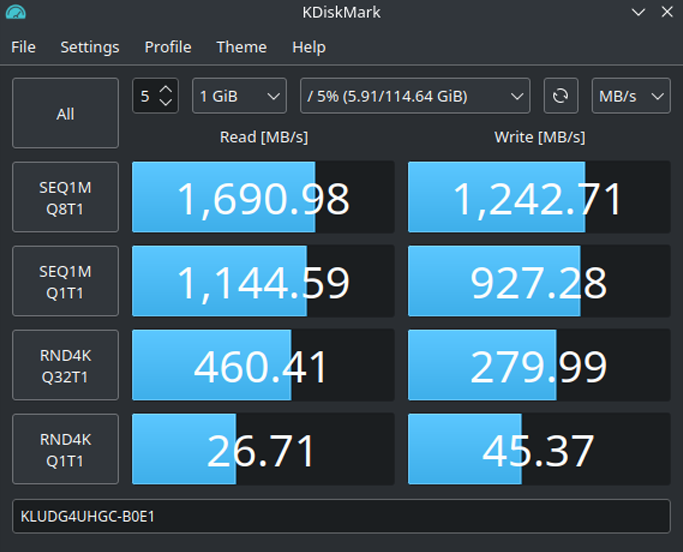
HDParm with
hdparm -tT /dev/sda3- Timing cached reads: 10700 MB in 2.00 seconds = 5356.84 MB/sec
- Timing buffered disk reads: 3948 MB in 3.00 seconds = 1315.66 MB/sec
Power Consumption #
Idle: 1.7-1.8 W
Full CPU load: 7W peak settles around 6W (without heatsink or fan)
Conclusion & Verdict #
I think we have gotten a neat board this time around with lots of promises from Qualcomm which it seems to deliver on first glance. While I don’t know the final price yet similar boards with the same SoC are on sale for $179 so we have to see how this one will be priced. Until then it will be interesting to test and find out how the Adreno GPU performs in different scenarios including emulation, what the 12 TOPS NPU is capable of or if we can actually get Windows 11 on Arm running since this is one of the rare SoC’s that is on the compatibility list from Microsoft.
So subscribe to our RSS feed and on X/Twitter to not miss when the full review comes out!
If you have any interesting applications I should test on this board reach out via the post about this article on our X profile: @sbcwiki and I will try to include it in the full review.
Author: Mecid Urganci
I’m a full time Applied Cognitive and Media science student who in his free time loves to tinker. This sparked an interest in embedded hardware, which I try to make more accessible with this platform I created “SBCwiki”. You can find me on X/Twitter at @mecoscorner and on GitHub at @HeyMeco